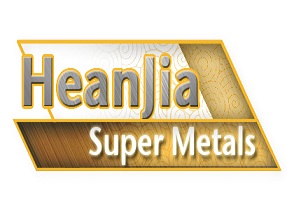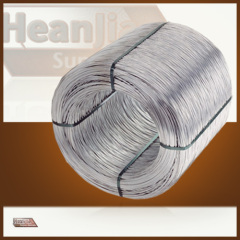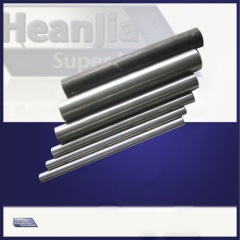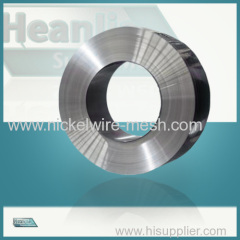
|
Heanjia Super-metals Co., Ltd.
|
Grade 316L Stainless Steel Wire
| Payment Terms: | T/T,L/C,D/A,D/P,WU |
| Place of Origin: | Hebei, China (Mainland) |
|
|
|
| Add to My Favorites | |
| HiSupplier Escrow |
Product Detail
316L Stainless Steel has higher resistance to pitting and crevice corrosion in chloride environments.
Wire Diameter: 0.05mm-10.0mm
316L Stainless Steel Wire
Grade 316L wire, the low carbon version of 316 wire and is immune from sensitization (grain boundary carbide precipitation). Thus it is extensively used in heavy gauge welded components (over about 6mm). The molybdenum gives 316 wire better overall corrosion resistant properties than Grade 304 wire, particularly higher resistance to pitting and crevice corrosion in chloride environments.
Wire Diameter: 0.05mm-10.0mm, 0.002 Inch to 0.3937 Inch
316L Stainless Steel Wire Corrosion Resistance
Excellent in a range of atmospheric environments and many corrosive media - generally more resistant than 304. Subject to pitting and crevice corrosion in warm chloride environments, and to stress corrosion cracking above about 60°C. Considered resistant to potable water with up to about 1000mg/L chlorides at ambient temperatures, reducing to about 500mg/L at 60°C.
316 is usually regarded as the standard "marine grade stainless steel", but it is not resistant to warm sea water. In many marine environments 316 does exhibit surface corrosion, usually visible as brown staining. This is particularly associated with crevices and rough surface finish.
316L Stainless Steel Wire Heat Resistance
Good oxidation resistance in intermittent service to 870°C and in continuous service to 925°C. Continuous use of 316 in the 425-860°C range is not recommended if subsequent aqueous corrosion resistance is important. Grade 316L is more resistant to carbide precipitation and can be used in the above temperature range. Grade 316H has higher strength at elevated temperatures and is sometimes used for structural and pressure-containing applications at temperatures above about 500°C.
Composition ranges for 316L stainless steels wire.
Grade | C | Mn | Si | P | S | Cr | Mo | Ni | N | |
316L | Min | - | - | - | - | - | 16.0 | 2.00 | 10.0 | - |
Max | 0.03 | 2.0 | 0.75 | 0.045 | 0.03 | 18.0 | 3.00 | 14.0 | 0.10 |
Mechanical properties of 316L stainless steels wire.
Grade | Tensile Str (MPa) min | Yield Str 0.2% Proof (MPa) min | Elong (% in 50mm) min | Hardness | |
Rockwell B (HR B) max | Brinell (HB) max | ||||
316L | 485 | 170 | 40 | 95 | 217 |
Physical properties for 316L grade stainless steels wire.
Grade | Density (kg/m3) | Elastic Modulus (GPa) | Mean Co-eff of Thermal Expansion (µm/m/°C) | Thermal Conductivity (W/m.K) | Specific Heat 0-100°C (J/kg.K) | Elec Resistiviy (nΩ.m) | |||
0-100°C | 0-315°C | 0-538°C | At 100°C | At 500°C | |||||
H | 8000 | 193 | 15.9 | 16.2 | 17.5 | 16.3 | 21.5 | 500 | 740 |
Grade specifications for 316L stainless steels wire.
Grade | UNS No | Old British | Euronorm | Swedish SS | Japanese JIS | ||
BS | En | No | Name | ||||
316L | S31603 | 316S11 | - | 1.4404 | X2CrNiMo17-12-2 | 2348 | SUS 316L |
Possible alternative grades to 316L stainless steel.
Grade | Why it might be chosen instead of 316? |
317L | Higher resistance to chlorides than 316L, but with similar resistance to stress corrosion cracking. |
Applications
Typical applications include:
• Food preparation equipment particularly in chloride environments.
• Pharmaceuticals
• Marine applications
• Architectural applications
• Medical implants, including pins, screws and orthopaedic implants like total hip and knee replacements
• Fasteners
Wire Further Processing | Cut to length Wire |
Flat Wire | |
Square and Shaped Wire | |
Rewinding and spooling | |
Polishing and cleaning |
Didn't find what you're looking for?
Post Buying Lead or contact
HiSupplier Customer Service Center
for help!
Related Search
316l Stainless Steel Wire
316l Stainless Wire Mesh
316l Stainless Steel
316l Stainless Steel Pipes
316l Stainless Steel Tubing
316L Stainless Steel Ring
More>>





















